Design, illustration and installation collide in the work of Pandarosa, a design duo who divide their time between Berlin and Melbourne.
August 3rd, 2010
Pandarosa are Ariel Aguilera & Andrea Benyi, two designers who met at Monash before embarking on an design journey together creating inspiring aesthetics for a broad range of clients – from restaurants and showrooms, through to wine labels and gallery spaces.
Indesignlive put some questions to the design duo.
Indesignlive: What are your backgrounds?
Pandarosa: We originally hail from Chile and Hungary and decided to start our own practice shortly after graduating from Monash University in 2000 where we both met while studying.
This decision was cemented after a 6-month period of presenting our graduate folios and repeatedly being advised that our visual approach was too ‘arty’ and ‘creative’ for the industry.
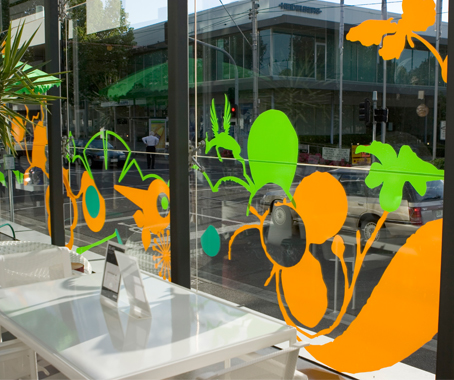
How did you end up doing what you do?
From the very beginning we aimed to target creative industries, as we felt they weren’t getting appropriate visual representation at that time and would be the most suitable sector to approach with our visual aesthetics.
Since we were aware this clientele wouldn’t bring huge financial rewards, we concentrated on maintaining a high level of creative input within each projects, thus allowing us to apply a greater level of conceptual and creative control over our work.
This conceptual and perhaps more ’experimental’ approach was well received within our creative clientele and has since grown to became an essential aspect of our practice, which we apply across all our projects.
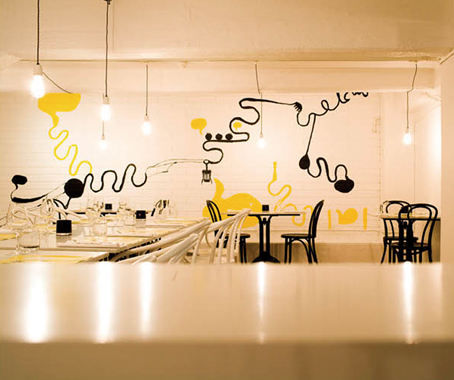
Why do you choose to work between Berlin and Melbourne?
This arrangement amidst ’northern vs. southern’ hemispheres allows us to keep an active local presence while at the same time permits us to take part on various international projects.
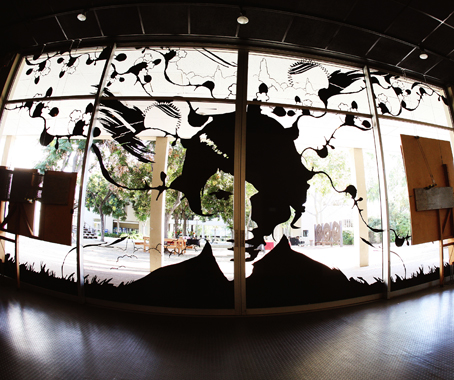
Your work is hugely varied, from installations and illustrations all the way through to wine label design and restaurant branding. Could you tell us how you pick your projects?
This ’diversity’ is something that has developed quite organically within the studio and can probably be traced back to our early exhibition work, which juxtaposed elements of design, illustration and installation into a singular outcome.
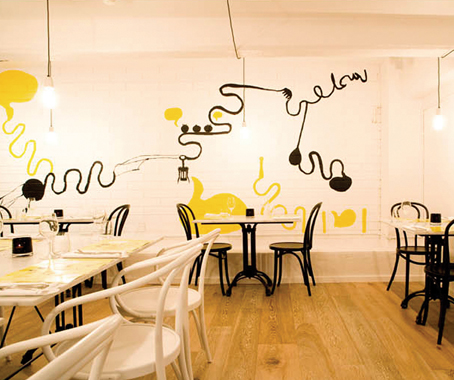
These variations haven’t developed through a conscious decision but have rather come to life from our varied interests, willingness to explore uncharted territory and the simple fact that we get bored of our work rather quickly.
We never ’pick’ projects as such – we simply try to apply the same approach across the board regardless of application. In the end we’ve been fortunate to have clients with foresight who can see the possibility of implementing a variety of approaches within singular or multiple projects.
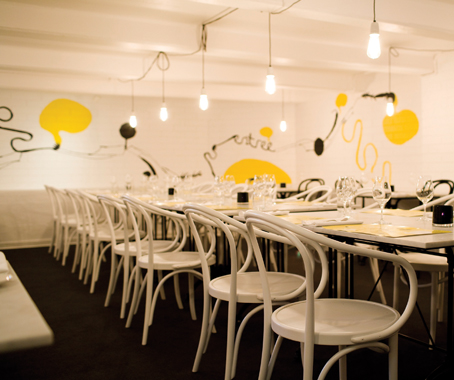
How do you approach each of your projects?
The manner in which we approach a project doesn’t particularly change from say an exhibition to a branding project, in the end it’s all about communication. Perhaps the main difference is the level of personal ’messaging’ implemented within each outcome.
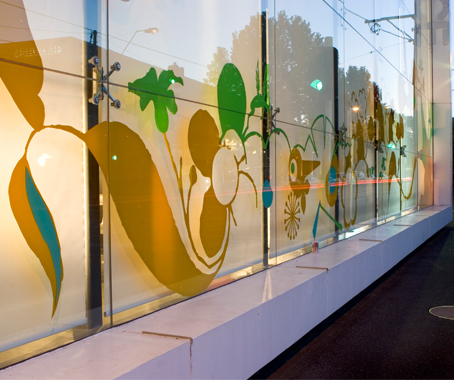
Could you explain the way in which the label design for ’Kid you not Wines’ evolved?
The KYN project involved our participation as ’illustrators’ across the entire branding and came through a collaborative venture between the studio and an ad agency.
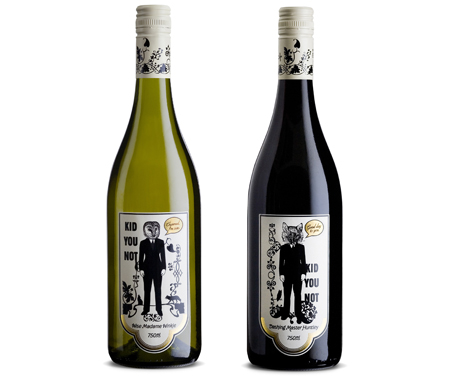
While we were really pleased with the final outcome of the products the project taught us an important lesson in middle administration communication and time management, proving that in most cases it is much easier to liaise directly with the client rather than receiving ’watered down’ information from a middle source.
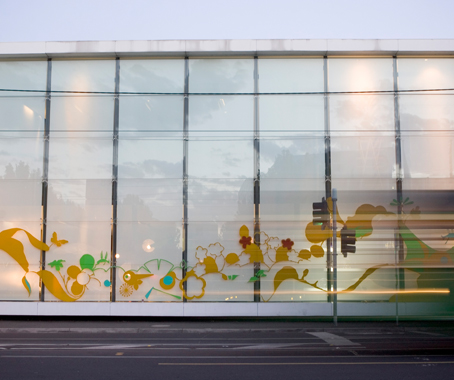
What projects do you enjoy the most?
Probably the ones which involve a large amount of collaboration, not just between the client and the studio but also among ourselves.
Although this constant ’back and forth’ can at times create a ’clash of ideas’ between us, we find it a crucial aspect within the process in order to create the best possible outcome, be it a commercial or personal project.
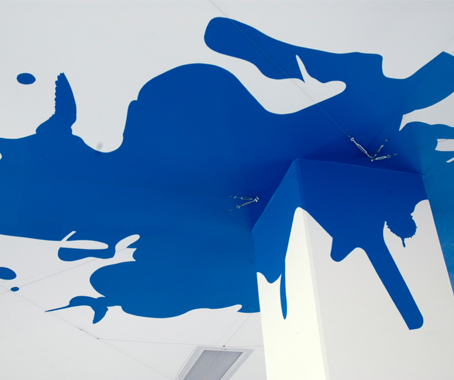
Which has been your favourite project to date?
Probably our artistic endeavors as they allow us to explore more personal issues and aspects within our life. The installation and lecture project we did at UDK (Universitat der Kunste) in Berlin last year was a great experience as well as the ’Redefining the line’ group show at CSF main art gallery in California.
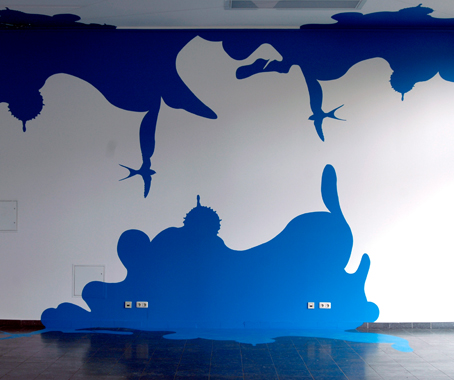
What would be your dream project?
We’re particularly keen to explore a more sculptural / 3-dimensional approach within our work which would allow us to ’build’ environments and spacial structures. We feel it’s an important step in the evolution of our work and would remove our visuals from their 2-dimensional grid into a more ’alive’ realm.
Pandarosa
pandarosa.net
pandarosa.com.au
A searchable and comprehensive guide for specifying leading products and their suppliers
Keep up to date with the latest and greatest from our industry BFF's!

In the pursuit of an uplifting synergy between the inner world and the surrounding environment, internationally acclaimed Interior Architect and Designer Lorena Gaxiola transform the vibration of the auspicious number ‘8’ into mesmerising artistry alongside the Feltex design team, brought to you by GH Commercial.

Create a configuration to suit your needs with this curved collection.

Sub-Zero and Wolf’s prestigious Kitchen Design Contest (KDC) has celebrated the very best in kitchen innovation and aesthetics for three decades now. Recognising premier kitchen design professionals from around the globe, the KDC facilitates innovation, style and functionality that pushes boundaries.

A ‘quiet’ design, a durable character and a solid working relationship contribute to the ongoing appeal of BIG-GAME’s Castor collection for Karimoku New Standard.
The internet never sleeps! Here's the stuff you might have missed

We spoke with George Fleck, Vice President and Global Brand Leader of W Hotels, about the intermingling of hotel and hospitality design trends.

Set to undergo a $60-million revitalisation, the National Gallery of Australia has announced the launch of a landscape design competition for its Sculpture Garden.